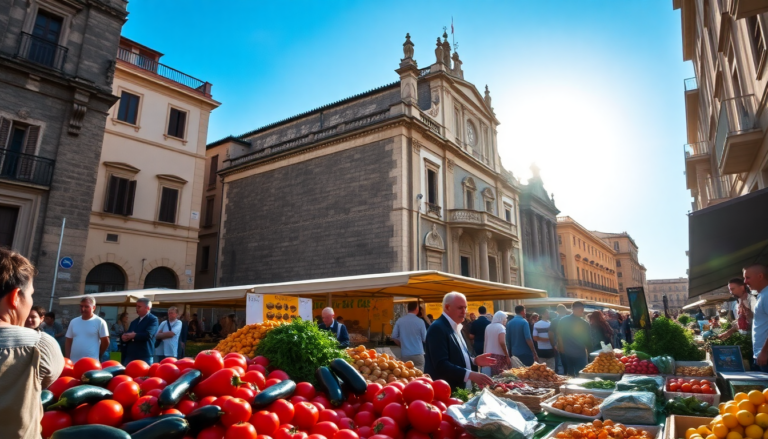Argomenti trattati
Catania, a city on the eastern coast of Sicily, showcases a rich tapestry of history and culture. Its architecture, influenced by Greek origins and Baroque rebirth, stands as a testament to the cycles of destruction and renewal. This Sicilian jewel, often referred to as ‘the black city’ due to its prominent use of volcanic stone, is not just a feast for the eyes but also for the palate.
Gastronomic highlights of Catania
When one thinks of Catania, the culinary scene inevitably comes to mind. The city is renowned for its authentic food culture, from home-cooked meals to lively street food offerings. Visitors are often encouraged to seek out local trattorias where they can indulge in traditional dishes. A standout is the famed pasta alla norma, which features fresh pasta topped with a rich tomato sauce, fried eggplant, salted ricotta, and fresh basil. This dish holds a special place in Catania’s gastronomic landscape, evoking admiration akin to a masterpiece of opera.
While the origins of this dish are steeped in local lore, many believe it was named after a comment made by the Catanese playwright Nino Martoglio, who, upon tasting it, exclaimed, ‘Chista è ‘na vera Norma!’ likening its perfection to that of Vincenzo Bellini’s opera ‘Norma’. This connection to the arts further enriches the city’s culinary narrative.
Vibrancy of local markets
Catania’s markets are another essential part of the city’s charm. The famous fish market, known as ‘A piscaria’, located in the heart of the historic center, embodies the lively spirit of Sicilian life. Here, vendors passionately showcase their fresh catches, and the air is filled with the sounds of haggling and laughter. This bustling marketplace captures the essence of Catania, where culinary traditions thrive amidst a backdrop of vibrant community interactions.
Moreover, one cannot mention Catanese delicacies without highlighting the popular seltz al limone, a refreshing lemon drink sold at kiosks throughout the city, and the beloved granita served with a brioche—a perfect treat for those warm Sicilian days.
The multicultural aspect of Catania
Interestingly, Catania is also home to a significant Bengali community, which constitutes nearly 7% of the 13,000 foreign residents in the city. This cultural infusion has given rise to a new culinary scene, blending Asian flavors with traditional Sicilian cuisine. The historic market ‘A Fera O’Luni’ in Piazza Carlo Alberto has become a hub for this culinary fusion, where visitors can explore innovative dishes that reflect a vibrant intersection of traditions.
Historical landmarks and natural beauty
Among the historical landmarks worth visiting is the Castello Ursino, built under the reign of Frederick II of Swabia. Although currently closed for renovations, its architectural grandeur is a sight to behold. Nearby, various dining options allow visitors to enjoy the flavors of Catania while soaking in the historic ambiance.
For those seeking a natural retreat, Marina di Ragusa is a perfect addition to any itinerary. This beautiful coastal area features a scenic 6-kilometer path along the Irminio River, surrounded by lush Mediterranean landscapes. It is a beloved spot for local families and birdwatchers, as numerous migratory species stop here during their journeys.
Catania, with its rich history, vibrant food culture, and welcoming community, offers an unforgettable experience. Its culinary delights and cultural landmarks invite exploration and appreciation, making it a destination that appeals to travelers of all backgrounds.

